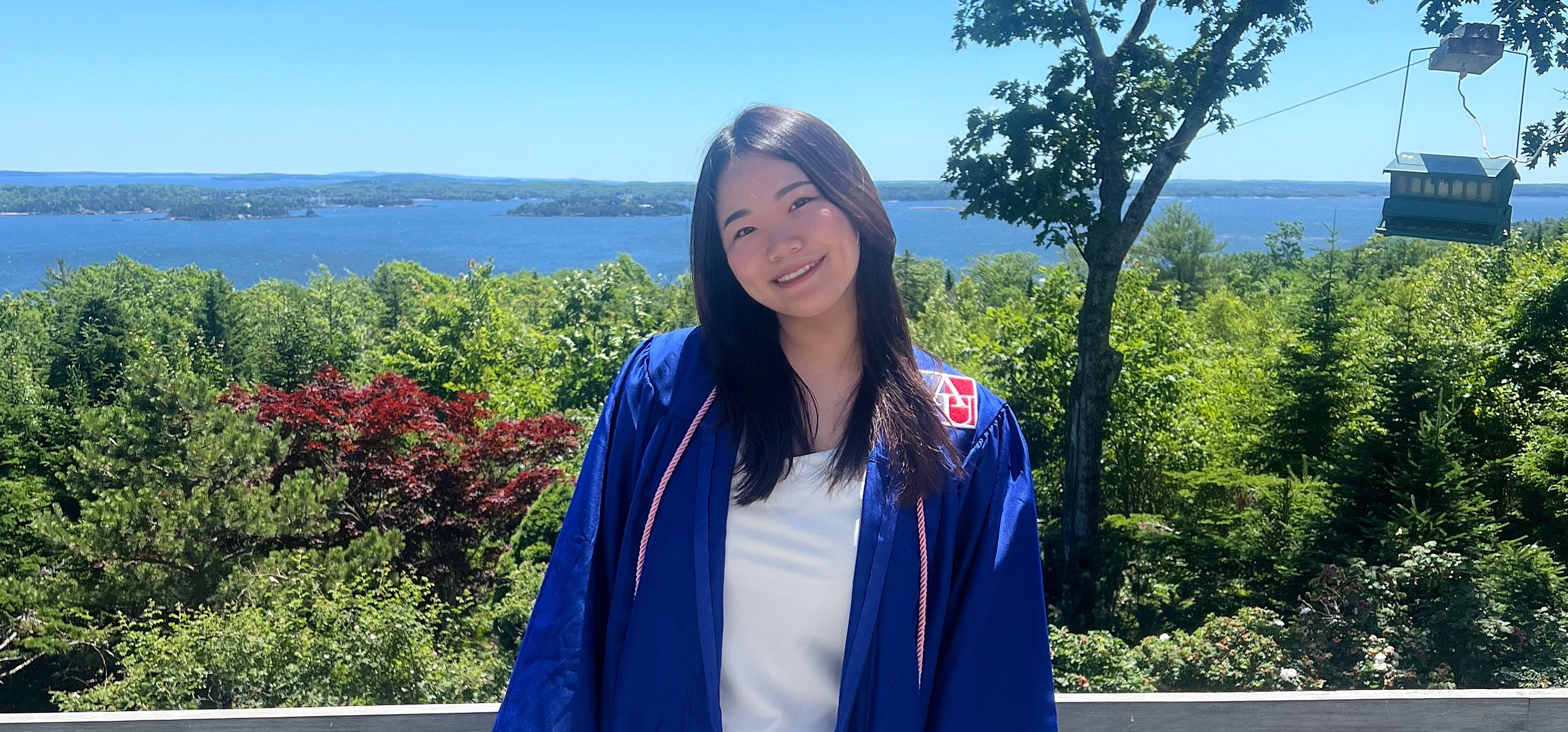
Bridging Japan and the US through International Relations and Language – My Four Years in the JDP and My Global Future
INADA Mimi
Fourth-year Joint Degree Program (RU-home)
As a fourth-cohort student in American University-Ritsumeikan University Joint Degree Program (JDP), Mimi Inada is set to graduate in March 2025. Looking back on the past four years, we asked her to reflect on her journey. Without any significant overseas experience before university, how did she grow into a globally minded individual?
From a General High School to an English-Based Joint Degree Program
MimiSince high school, I had been interested in Japanese diplomacy and wanted to study politics and international relations. I considered studying abroad, but the high tuition fees were a major obstacle. That’s when a friend who was applying to Ritsumeikan University (RU) recommended the College of International Relations. That was my first encounter with JDP.
The idea of studying two years in Japan and two years in the U.S., earning a single degree from both universities, was really appealing. What sealed the deal for me was the opportunity to study in Washington, D.C. -an ideal location for learning about international relations.
Since I had attended a general high school, my first semester was incredibly tough. I had never studied entirely in English before, so I struggled to understand my professors, focus in class, and keep up with assignments. In high school, I only had one English class per week with a native teacher, but university classes were 90 minutes long and completely different.
By the second semester, I started getting used to listening and writing in English, but then my academic advisor warned me, “At this rate, you won’t make it to D.C.!” That was a wake-up call. I knew I had to step up my game, so I made a firm decision to work even harder.
Experiencing Active Learning at American University
After months of hard work, Mimi successfully met all the course requirements needed to study abroad at American University (AU). Overcoming this challenge marked the start of a whole new experience.
MimiThe learning environment in Japan and the U.S. was completely different. Classes at AU were discussion-based, where students led the conversations and professors provided additional insights. That’s when I realized, “Oh, so this is what active learning is all about.”
Back then, I wasn’t comfortable speaking up in front of others—I preferred listening to different perspectives and processing them internally. But I knew that wouldn’t work in AU classes, so I actively tried to overcome my hesitation. I made a point to participate as much as possible in the first few classes because I learned that it becomes even harder to speak up later in the semester.
Through numerous discussions and presentations, I gained invaluable experience in public speaking.
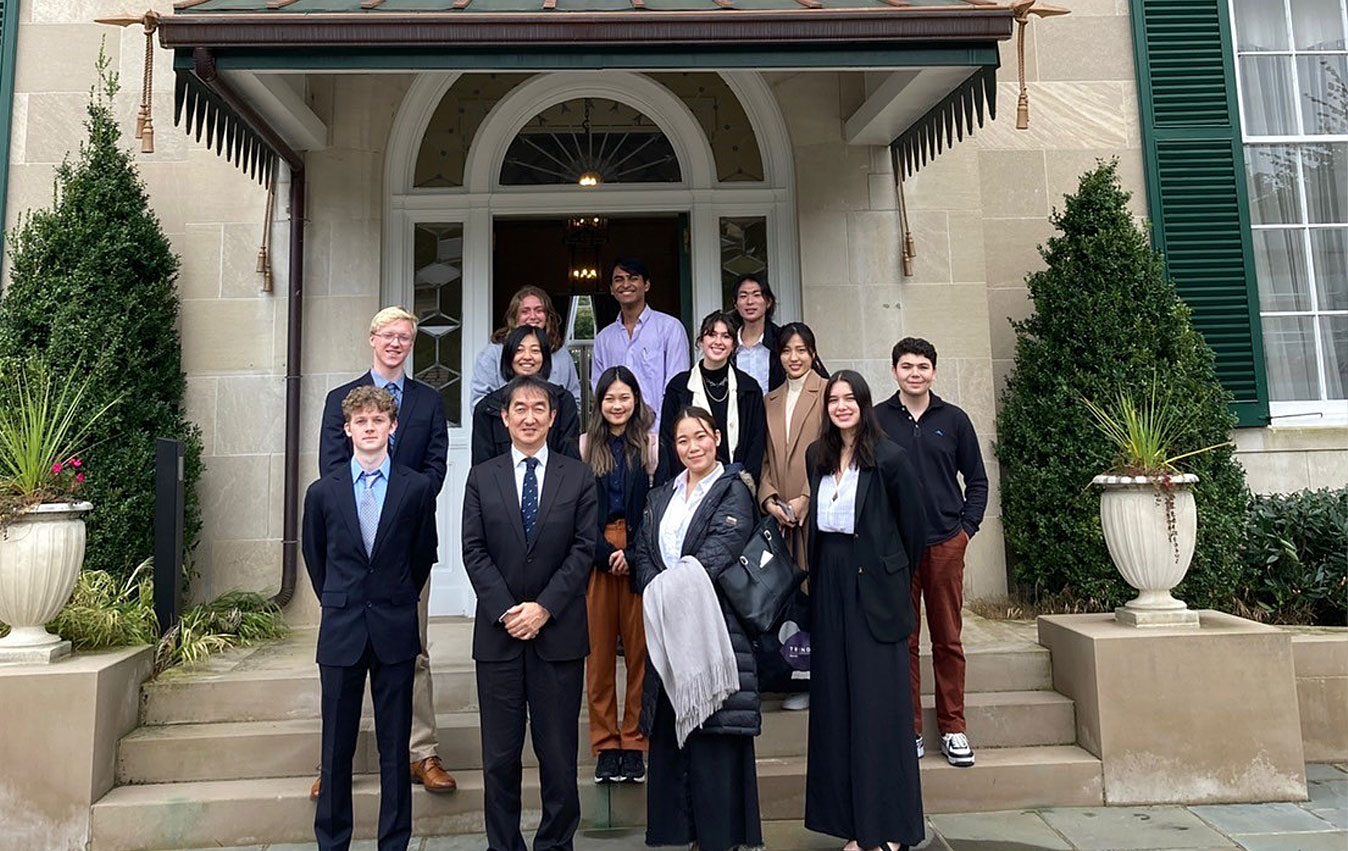
What was the most memorable class at AU?
MimiIt was "SISU-380 Conquest, Cold War, Globalization." This course focused on Latin America, a region I knew little about at the time, so everything was new and fascinating.
We discussed human rights issues in Latin America, and since I was also taking another class on human rights at the same time, this course sparked my deeper interest in the topic. Many of my classmates had Latin American roots and spoke fluent Spanish, making discussions incredibly lively. My fellow JDP classmates and I did our best to keep up, and while it was challenging, it was also an exciting and uniquely American learning experience.
At AU, there were so many interesting courses outside my major. I took a yoga class and even a course on human-animal coexistence, where I got to interact with facility dogs. These experiences broadened my knowledge beyond international relations.
Before going to AU, Mimi had already participated in an internship course at RU. Once in Washington, D.C., she continued to pursue hands-on experiences outside the classroom.
MimiWhile at AU, I interned at the Washington, D.C. bureau of a Japanese newspaper. My main tasks included translating interview recordings into Japanese and preparing reference materials from translated news articles.
One day, my boss found out that I had a connection to someone involved in political activities and asked me to arrange an interview. Coordinating everything in English was a first for me, and I also got to assist as an interpreter during the interview. It was a fantastic learning experience.
In my second year at AU, I became a Teaching Assistant (TA) for the "American University Experience" course, which all first-year JDP students take. I worked closely with the professor each week to plan the curriculum. Since my class consisted of JDP students who had entered AU directly, I incorporated lessons introducing RU and Japanese culture.
At first, I noticed that my classmates weren’t very close with each other, so I organized social events like pizza parties to help everyone bond. Seeing them become more engaged in class after that was really rewarding.
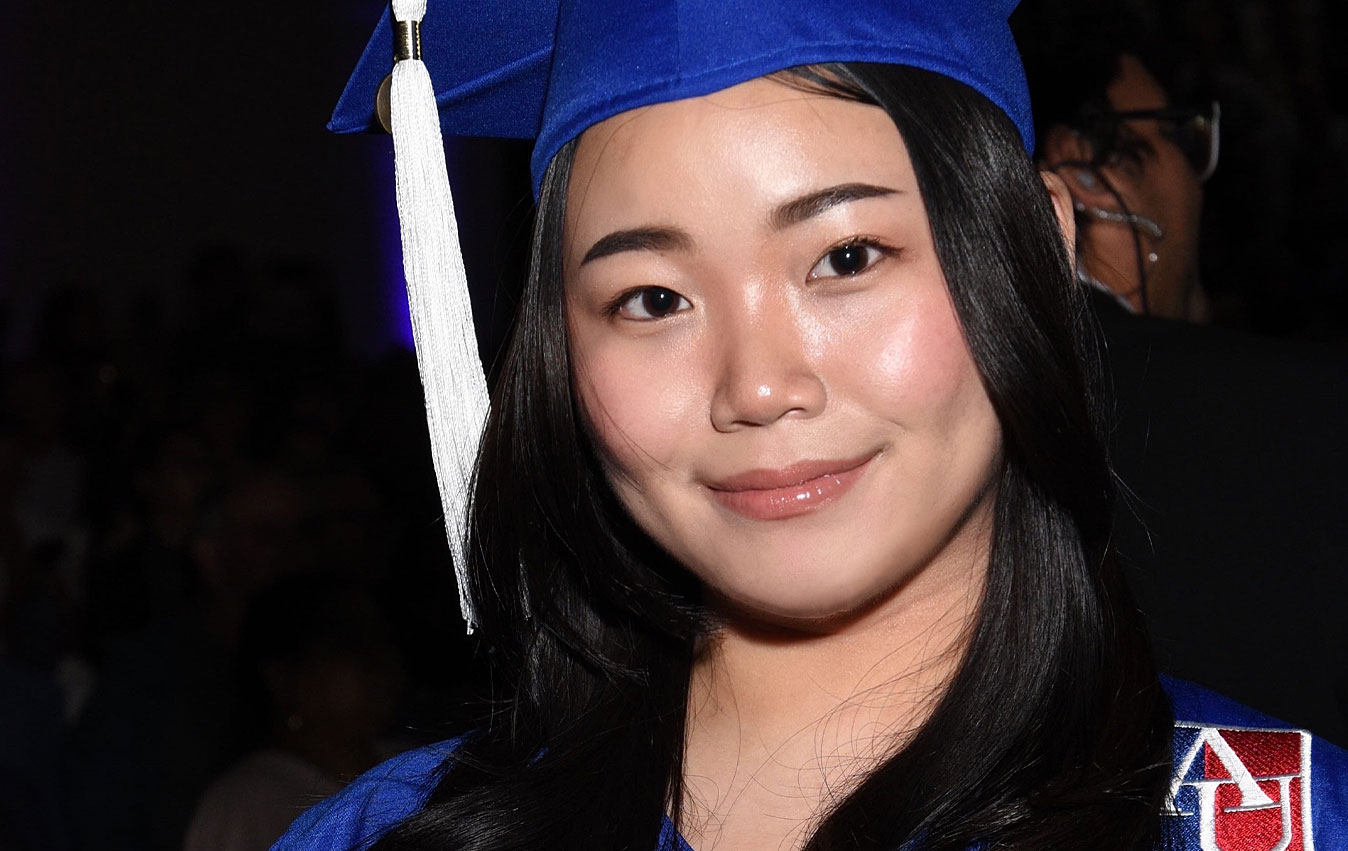
Mimi gained experience as much as she could, both outside and inside the classroom. How did her two years at AU help her grow?
MimiSince Washington, D.C. is the political hub of the U.S., people there were extremely sensitive about political topics. But even outside of politics, I encountered people with strong opinions on issues like immigration and gender equality.
I had always believed in the importance of diversity and inclusivity, but meeting people with different viewpoints challenged me. Sometimes, after listening to their arguments, I’d think, “You know, they have a point.” These experiences broadened my perspective.
Staying optimistic is important, but if you rely solely on idealism, nothing changes. Reality requires practical solutions. Engaging in deep discussions helped me develop a more well-rounded worldview.
Joining the Ambassador’s Youth Council (AYC)
After returning to Japan, Mimi had her sights set on joining the Ambassador’s Youth Council (AYC), a global leadership program led by the U.S. Embassy and Consulates in Japan. Despite intense competition, she successfully secured a spot in the 6th cohort!
MimiI had always wanted to join AYC after hearing about it from a JDP senior, so I was incredibly honored to be selected.
The best part about AYC is the monthly discussions on topics we’re passionate about. We also get to interact directly with experts in various fields, making it an amazing opportunity to gain practical knowledge and skills beyond what’s taught in university.
For example, in the first session, I had the chance to exchange opinions on U.S.-Japan security with a navy attaché at the U.S. Embassy in Tokyo. Since I have a strong interest in security issues, it was an exciting and valuable experience!
(Photography by the U.S. Consulate in Osaka-Kobe)
Becoming a Bridge Between Japan and the U.S. Through Language and Security
Mimi has a desire to engage in language education as her life work, as much as her interest in security issues. Now she has discovered a job that would be a perfect match with her dream.
MimiMy dream is to become a bridge between Japan and the U.S. in the field of security. To achieve this, I plan to work as a Japanese language instructor for a company contracted by the U.S. Department of Defense, which provide language education to U.S.government officials.
I’ve always loved language education and have been teaching English privately. Currently, I teach adults in a language course, and many of my students have jobs that require interaction with Americans. Some have shared their frustration about struggling with English in professional settings.
Similarly, during an AYC discussion, the navy attaché mentioned that language barriers remain a challenge during joint training between the U.S. military and Japan’s Self-Defense Forces. If these barriers could be eliminated, it would greatly strengthen bilateral relations. I’d love to contribute to that.
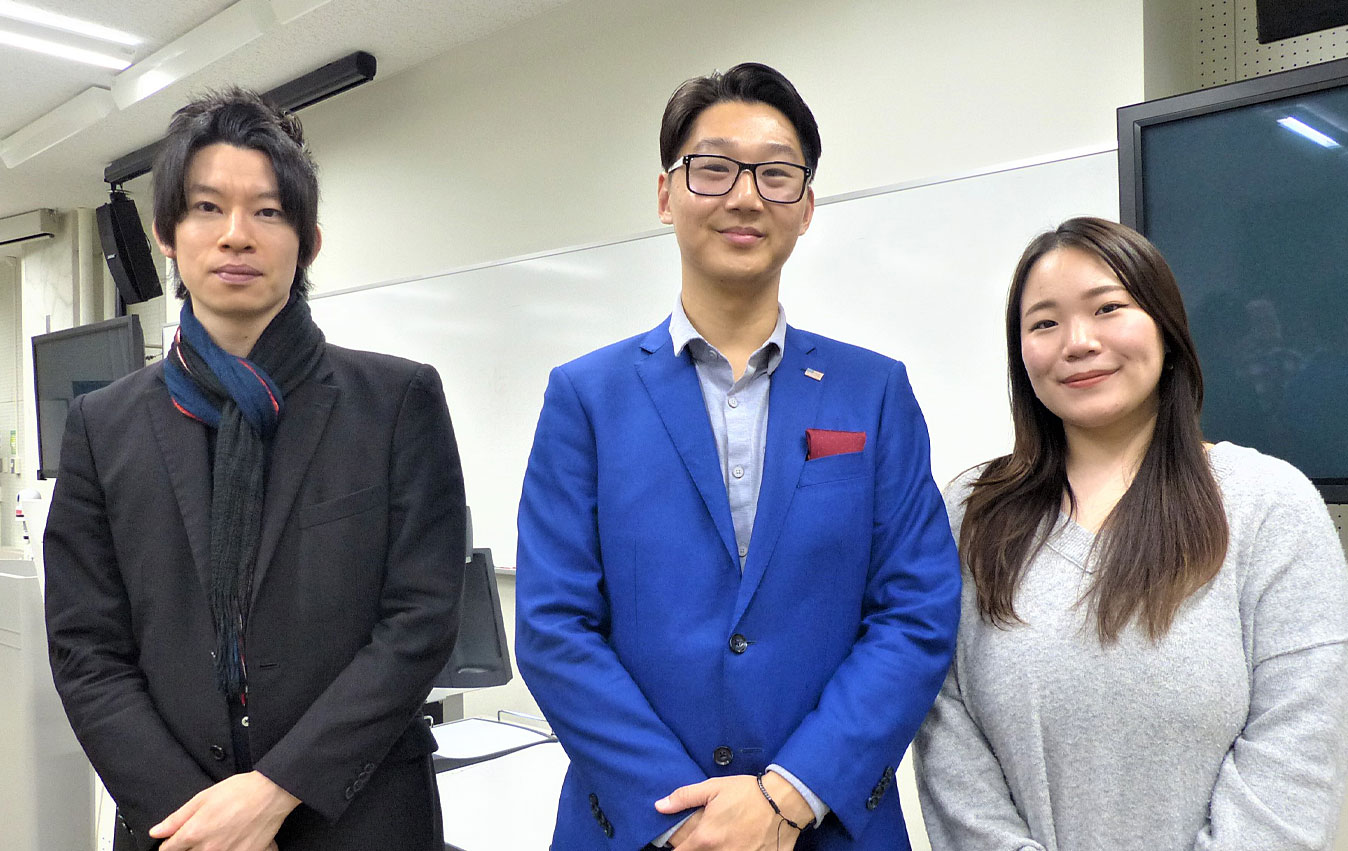
MimiI truly enjoy teaching and want to continue spreading the joy of learning languages. I’ll keep working hard to become an expert in security × language!
Since I was in elementary school, I have dreamed of living in an English-speaking country and experiencing life abroad. That's why I want to work in the U.S. in the future. America is a land of freedom and opportunities. I find it appealing that there are many needs where I can make use of my background.
Also, I love talking, so I really enjoy American culture, where even strangers strike up conversations and supermarket clerks engage in friendly chats. In that sense, I feel that the U.S. is a comfortable place for me to live.
Dream of Going Global: "If I Can Do It, So Can You!"
Finally, Mimi has a message for future and current JDP students
MimiMake the most of JDP’s unique features and challenge yourself wherever you are. In your first year at RU, focus on building a solid foundation for your studies in the US. For example, the Academic Skills course I took in my first year was incredibly helpful, and I still use what I learned there. Also, take advantage of internships and extracurricular activities in Washington, D.C. – it’s the perfect location for learning about global politics.
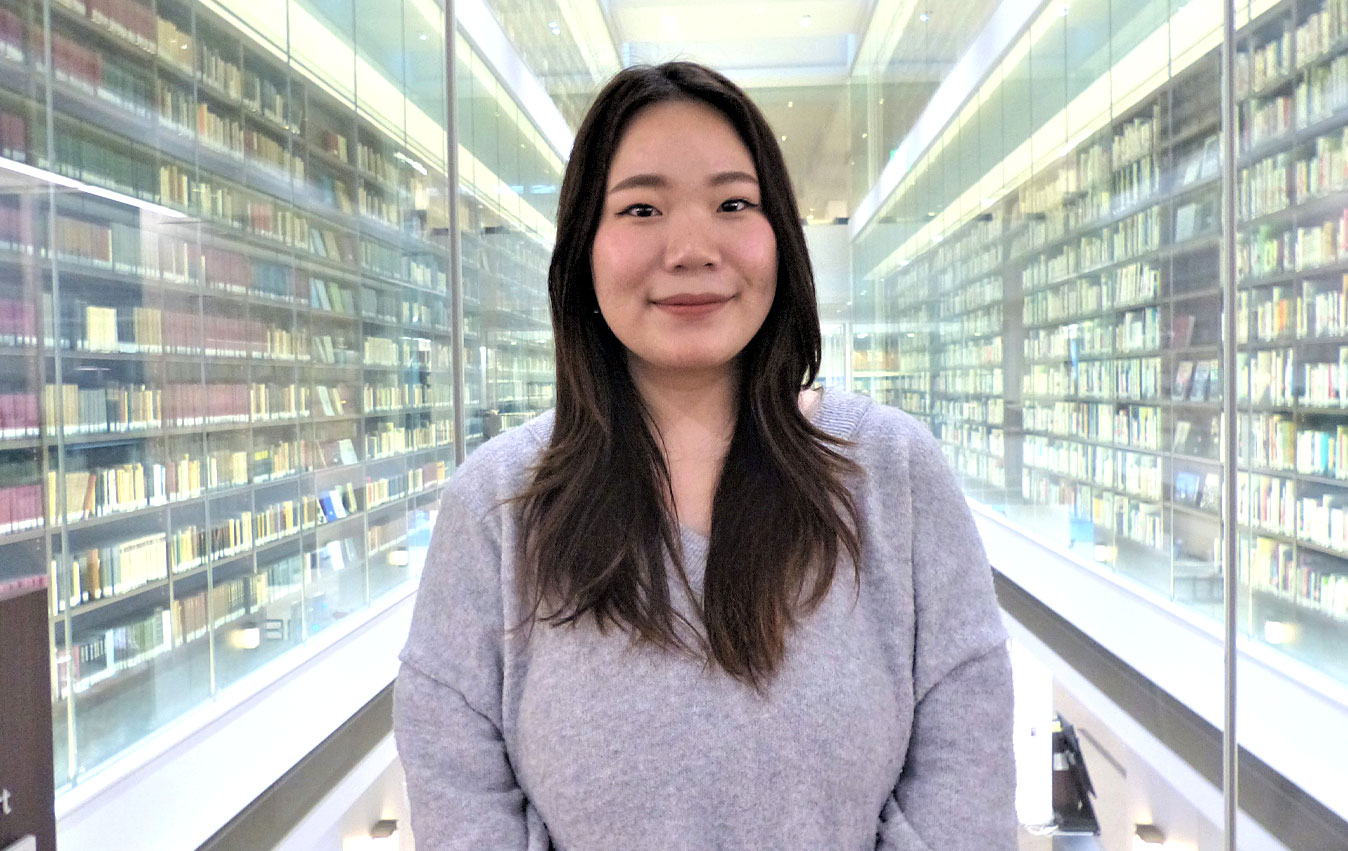
From a high school student with no international experience to a fluent English speaker, Mimi Inada has shown that anyone can become a global professional with determination. With her passion for international relations and language, she is well on her way to becoming a bridge between Japan and the US. We wish her all the best in her future endeavors!
February 2025
MORE INTERVIEWS
-
I participated in the Peace Studies Seminar and engaged in meaningful discussions with peers who shared a commitment to deepening our understanding of peacebuilding and broadening our perspectives.
ONG Kristen Valeria
Second-year Global Studies Major / International Student from Singapore2025.11.5
studentlife|academics|gs_major|
-
The Bangkok International Organization Training Program Taught Me the Importance of Understanding Regions from a Broad Perspective — I Aspire to Build a Career in International Politics
RINALDI Christian Giuseppe
Second-year Joint Degree Program (AU-home)2025.10.22
academics|international|jdp|
-
Developing my Japanese proficiency enabled me to engage in a wide range of experiences during my time in Japan.
DAO NGUYEN BAO Ngoc
Third-year Global Studies Major / International Student from Vietnam2025.9.26
studentlife|international|gs_major|
-
Studying international relations in English while also having the opportunity to learn Japanese in Kyoto provided the perfect environment for me.
CHA Mok Won
Fourth-year Global Studies Major / International Student from Korea2025.9.22
studentlife|international|gs_major|
-
Exploring International Relations through the U.S. Consulate General Osaka-Kobe’s Ambassador’s Youth Council
AMANAI (VAN DUIJVENBODE) Milea
Fourth-year Global Studies Major2025.9.22
studentlife|studyabroad|gs_major|
-
Studying Peace in Kyoto: Two Years Including a Hiroshima Seminar and Internship at the Kyoto Museum for World Peace
Miles Brian Mariano-Ortilla
Fourth-year Joint Degree Program (AU-home)2025.9.4
studentlife|academics|jdp|